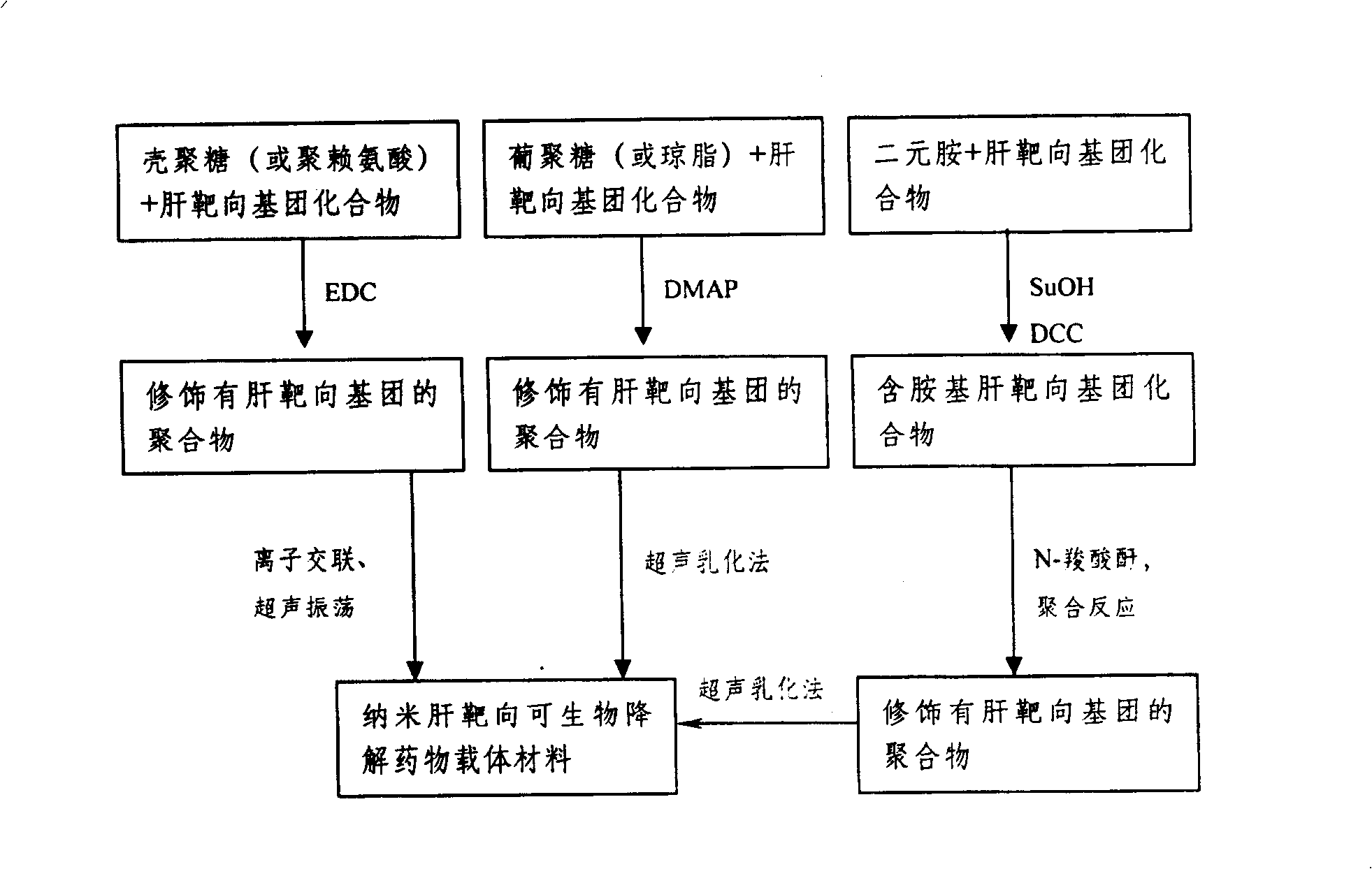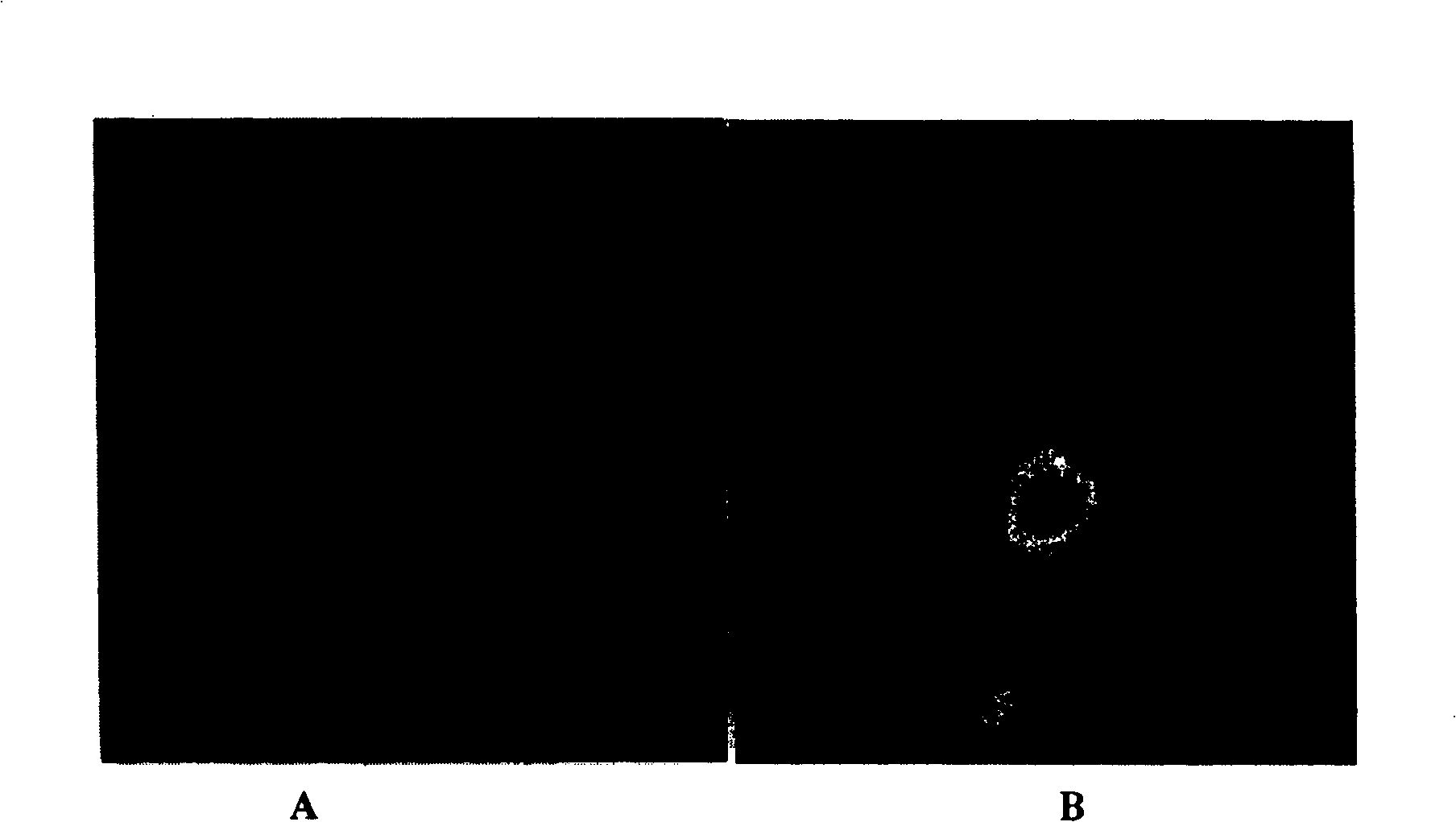Method for preparing nano liver-target biodegradating medicine carrier material
A carrier material and biodegradation technology, which is used in drug combinations, pharmaceutical formulations, medical preparations with non-active ingredients, etc., to achieve the effects of high sustained-release drug delivery, reduced treatment costs, and good targeting ability.
- Summary
- Abstract
- Description
- Claims
- Application Information
AI Technical Summary
Problems solved by technology
Method used
Image
Examples
Embodiment 1
[0064] Example 1. Preparation of modified glycyrrhetic acid-modified chitosan nano-liver-targeted biodegradable drug carrier material and nanoparticles:
[0065] 1. Preparation of glycyrrhetic acid-modified chitosan:
[0066] Weigh 2 g of glycyrrhetic acid and 1 g of EDC into a 200 mL beaker, add 70 mL of DMF to the bottle, and dissolve with magnetic stirring.
[0067] Add 5g of chitosan into a 500mL three-necked bottle, add 100mL of distilled water and stir magnetically until dissolved. Then, pour the glycyrrhetic acid solution prepared above into the chitosan solution, continue stirring, and heat to 60° C. to react for 6 hours. The reaction solution was cooled to 40°C and concentrated to about 50 mL with a rotary evaporator. The concentrated solution was poured into a beaker containing 800 mL of ethanol for precipitation, filtered, and the precipitate was washed with 50 mL of ethanol and 50 mL of diethyl ether respectively, and dried in vacuum (40° C., 5 mmHg) for 24 hours...
Embodiment 2
[0074] Example 2. Preparation of modified glycyrrhetic acid-modified polylysine nano-liver-targeted biodegradable drug carrier material and nanoparticles:
[0075] 1. Preparation of glycyrrhetic acid-modified polylysine:
[0076] Weigh 2 g of glycyrrhetic acid and 1 g of EDC into a 200 mL beaker, add 70 mL of DMF to the bottle, and dissolve with magnetic stirring.
[0077] Add 5 g of polylysine to a 500 mL three-necked flask, add 100 mL of distilled water and magnetically stir until dissolved. Then, the glycyrrhetic acid solution prepared above was poured into the polylysine solution, continued stirring, and heated to 60° C. to react for 6 hours. The reaction solution was cooled to 40°C and concentrated to about 50 mL with a rotary evaporator. The concentrated solution was poured into a beaker containing 800 mL of ethanol for precipitation, filtered, and the precipitate was washed with 50 mL of ethanol and 50 mL of ether, and dried in vacuum (40° C., 5 mmHg) for 24 hours. Th...
Embodiment 3
[0084] Embodiment 3. Preparation of agar nano-liver-targeted biodegradable drug carrier material and drug-loaded nanoparticles modified with glycyrrhetic acid:
[0085] 1. Preparation of glycyrrhetinic acid modified agar:
[0086] Weigh 2 g of glycyrrhetic acid and 1 g of EDC into a 200 mL beaker, add 70 mL of DMF to the bottle, and dissolve with magnetic stirring.
[0087] Add 7g of agar into a 500mL three-necked flask, add 100mL DMF and magnetically stir until dissolved. Then, the glycyrrhetic acid solution prepared above was poured into the agar solution, continued to be stirred, and heated to 60° C. to react for 6 hours. The reaction solution was cooled to 40°C and concentrated to about 50 mL with a rotary evaporator. The concentrated solution was poured into a beaker containing 800 mL of ethanol for precipitation, filtered, and the precipitate was washed with 50 mL of ethanol and 50 mL of ether, and dried in vacuum (40° C., 5 mmHg) for 24 hours. The product contained 4%...
PUM
| Property | Measurement | Unit |
|---|---|---|
| degree of substitution | aaaaa | aaaaa |
Abstract
Description
Claims
Application Information
 Login to View More
Login to View More - R&D
- Intellectual Property
- Life Sciences
- Materials
- Tech Scout
- Unparalleled Data Quality
- Higher Quality Content
- 60% Fewer Hallucinations
Browse by: Latest US Patents, China's latest patents, Technical Efficacy Thesaurus, Application Domain, Technology Topic, Popular Technical Reports.
© 2025 PatSnap. All rights reserved.Legal|Privacy policy|Modern Slavery Act Transparency Statement|Sitemap|About US| Contact US: help@patsnap.com



